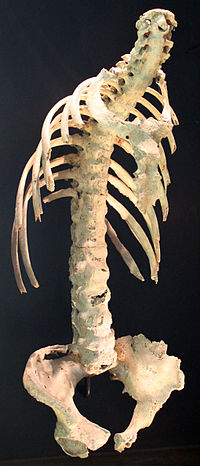
Photo from wikipedia
Diagnostic reference level (DRL) is an appropriate instrument toward promoting radiation doses optimisation in medical imaging. The goal of this research is developing DRL to optimise computed tomography (CT) doses… Click to show full abstract
Diagnostic reference level (DRL) is an appropriate instrument toward promoting radiation doses optimisation in medical imaging. The goal of this research is developing DRL to optimise computed tomography (CT) doses in patient examination. Parameters were collected in CT facilities for common procedures such as head, chest, pelvic and cervical spine (c-spine) imaging. The dose descriptors considered were volume computed tomography dose index (CTDIv) and dose length product (DLP). The DRLs were proposed at 75th percentile CTDIv for head (without and with contrast materials), chest (without and with contrast materials), pelvic and c-spine only without contrast materials; their values were 52, 52, 17, 14, 14 and 38 mGy, respectively. Whereas, DLP values for the aforementioned protocols were 1237, 1459, 625, 565, 605 and 1106 mGy.cm, respectively. This study fruitfully developed the DRLs for head, chest, pelvic and c-spine and can be accepted for clinical purposes.
Journal Title: Radiation protection dosimetry
Year Published: 2022
Link to full text (if available)
Share on Social Media: Sign Up to like & get
recommendations!